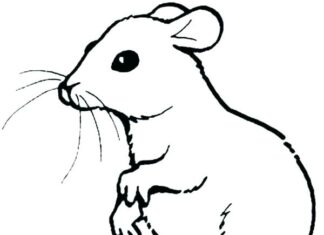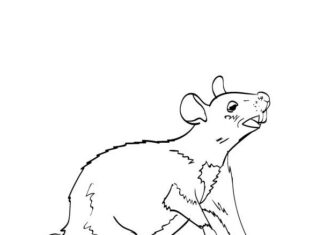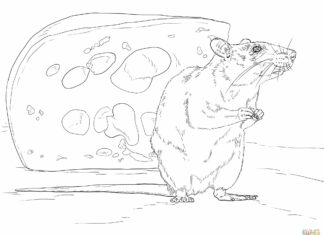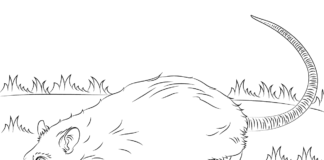Rats are rodents of the mouse family (Muridae) that are found throughout the world. They are known for their ability to adapt to a wide variety of environments and reproduce quickly.
Rat Coloring Book
information
- Distribution and habitats: Rats are found on every continent except Antarctica. Their ability to adapt to different habitats means that they can be found in cities as well as rural areas, forests, fields and other places.
- Reproduction and life cycle: Rats are known for their ability to reproduce quickly. Females can have multiple litters per year, and each litter can contain many young. Their life cycle is short, which contributes to rapid population growth.
- Ecological role: Rats play an important ecological role in nature, serving as food for predators and participating in organic decomposition processes.
- Threat to human health: Rats can carry diseases, such as plague and leptospirosis, which can transmit to humans. Therefore, controlling rat populations in urban areas is an important aspect of public health.
- Diversity of species: There are many species of rats, including those associated with cities, such as the slimy rat, and species that live in nature, such as the field rat.
- Senses: Rats have well-developed senses, including smell and hearing. Their senses help them find food and detect danger.
- Intelligence: Rats are considered relatively intelligent rodents. In laboratory studies, they have been shown to be capable of learning various tasks and solving problems.
- Agricultural damage: In many regions, rats can cause damage to agricultural crops by feeding on crops.
- Culture and symbolism: In different cultures, rats can be viewed both positively and negatively. In some mythologies or religions, they have symbolic meanings.
- Laboratory tests: Rats are widely used in scientific research, both biomedical and behavioral, because of their similarity to human organisms.
trivia
- Sociability: Rats are social animals and often live in groups called colonies. These colonies can number from a few to dozens of individuals.
- Resistance to poisons: Rats are famous for being resistant to many poisons and toxic substances. They have the ability to adapt to new substances in their diet, which makes eliminating them with poisons can be difficult.
- Flexibility in diet: Rats are omnivores and can eat a variety of foods, which helps them survive in different environments.
- Instant reproduction: Rats can have offspring as young as a few months old, which contributes to rapid population growth.
- Ability to escape: Rats are extremely skillful and can find their way to escape from hard-to-reach places. They have flexible bodies that allow them to get through narrow gaps.
- Cleverness and adaptation: Rats are known for their cleverness and ability to adapt to new conditions. They can learn new behaviors quickly, which makes them often used in scientific research.
- Nocturnal activity: Most rats are active at night, allowing them to avoid many predators that hunt mainly during the day.
- Senses: Rats have a well-developed sense of smell, which helps them detect food and avoid danger. Their hearing and touch are also well developed.
- Diversity of species: There are many different species of rats that vary in appearance, behavior and habitat.
- History related to people: Rats have played an important role in human history, both as pests and as laboratory animals. Research on rats has contributed to the discovery of much important medical information.
- Rats in culture: Rats often appear in literature, movies and art as characters or symbols. Depending on the context, they can symbolize both positive and negative qualities.
- Unusual behavior: Rats have been observed in a number of unusual behaviors, such as the ability to learn simple tasks, display empathy toward other individuals of their species, or show intelligence in problematic situations.










